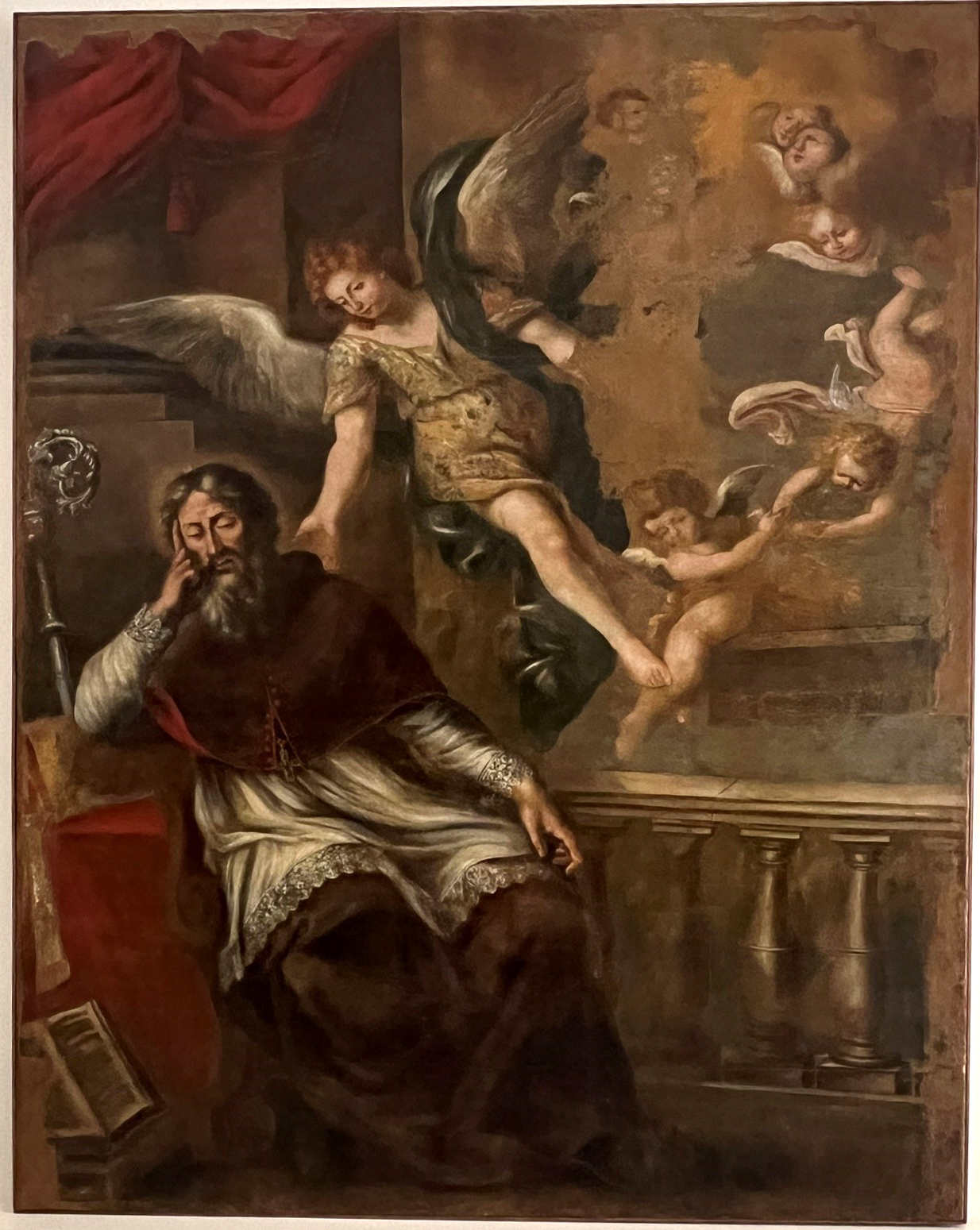This large canvas from the early 18th century, located on one of the side altars of the Cathedral before their total renovation in the late 18th century, depicts a key episode in the religious history of the Aeolian Islands, handed down by local tradition and also attested by external sources (Gregory of Tours, Theodore Studita): the miraculous arrival in Lipari of the body of St. Bartholomew, one of the twelve apostles of Jesus.
Agathon, who lived in the third century, at the time of Valerian’s persecution, seems to have been the first bishop of Lipari: around him, therefore, must have gathered the first Christian community on the island, whose headquarters were, almost certainly, in the Magdalene area, far from the still pagan acropolis.
Although historical uncertainties and a number of legendary tales persist around the figure of St. Agathon, according to a very ancient tradition on the 13th day of February in the year 264 A.D., he welcomed on the beach of Portinente, following a vision or a dream that foretold his arrival, the remains of the Apostle Bartholomew, which had miraculously arrived in a chest, sailing across the sea from the distant eastern shores.
Of this event the canvas proposes not so much the main event, the arrival of the body, as the preceding, more contemplative moment that anticipates it.
The mighty figure of St. Agathon, caught from sleep with his book slipped to the ground, miraculously receives news of the prodigy from an angel in flight who, shaking him, gestures to a spot beyond the elegant balcony, where angels and cherubs accompany the Apostle’s sarcophagus floating on the waters.
The tunic in which the angel is clad deserves special attention, with floral motifs and bright colors that seem to allude to spring as spiritual rebirth.

